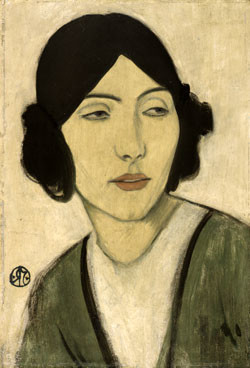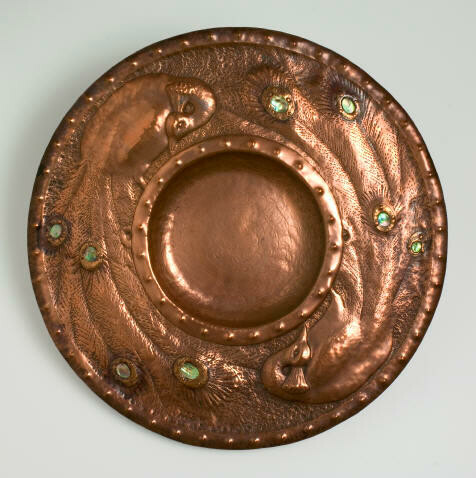Charles Kidson
Aotearoa New Zealand / British, b.1867, d.1908
Peacock Plate
- c. 1903-c. 1904
- Copper and paua shell
- Gifted by R. J. Eltoft, 2003
- 2003/162
Tags: animals, birds (animals), circles (plane figures), feather (material), plates (dishes)
Both the Aesthetic and Arts and Crafts movements made recurring use of peacock imagery as a motif in applied art and design, from jewellery and costume to furniture and decorative interiors – most famously in James McNeill Whistler’s Peacock Room in London in 1877.
Charles Kidson was a talented young sculptor who left Birmingham for New Zealand in 1888, the year after gaining his South Kensington art teaching qualifications. He started at the Canterbury College School of Art as an assistant master in 1892 and considerably expanded the school’s decorative arts training capabilities. This included setting up enamelling facilities, after a 1903 visit to London and Paris to refresh his skills and catch up with the latest developments. Alongside teaching, he undertook several collaborations with his fellow teacher, architect Samuel Hurst Seager, creating decorative metalwork panels and hinges for the latter’s Arts and Crafts interiors. Kidson resigned from the school in 1906, soon after Robert Herdman-Smith’s arrival, and increasingly devoted himself to public sculpture. He died prematurely at the age of 40.
(The Moon and the Manor House, 12 November 2021 – 1 May 2022)



